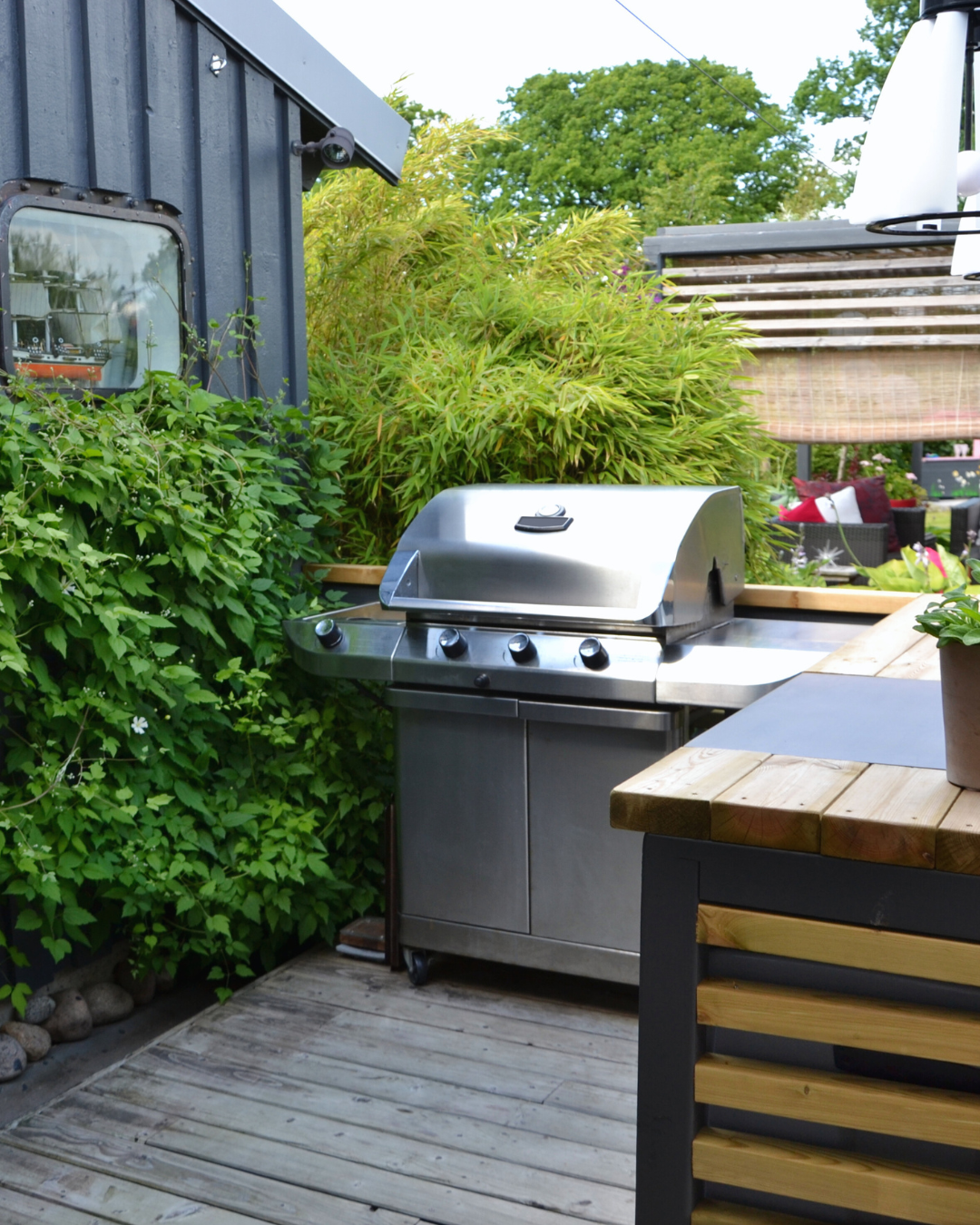Building Your Dream Outdoor Kitchen on a Budget: Tips for Creating an Affordable Culinary Space

Creating the perfect outdoor kitchen doesn’t have to break the bank. With thoughtful planning and creativity, anyone can design a functional outdoor kitchen that meets their needs while staying within budget. By prioritising essential features and incorporating DIY elements, individuals can achieve their dream outdoor kitchen without overspending.
Budget-friendly outdoor kitchen ideas can transform any space into a culinary oasis. From repurposing materials to choosing cost-effective appliances, there are plenty of ways to enhance the cooking experience outdoors. With the right approach, it’s possible to build a stylish and practical kitchen that invites friends and family to gather.
Investing time in DIY projects can significantly reduce costs while adding a personal touch. Whether it’s constructing a custom-built grill station or selecting durable yet inexpensive countertops, each choice contributes to both the aesthetics and functionality of the outdoor space. Embracing these strategies ensures that anyone can enjoy the benefits of an outdoor kitchen without the financial strain.
Planning Your Dream Outdoor Kitchen
Effective planning is essential for creating a functional outdoor kitchen that stays within a budget. Key considerations include space assessment, choosing a suitable design, and establishing a budget plan.
Assessing Space and Location
The first step is to evaluate the available space. Measure dimensions carefully to determine where the kitchen will fit. Consider factors such as sunlight, wind direction, and proximity to utilities. It’s crucial to ensure adequate room for movement and kitchen features. A typical layout includes areas for cooking, preparation, and dining. Leave at least 1.5 metres of clearance for comfortable access to appliances and workspaces.
Evaluate the terrain. A flat area will simplify installation, while sloped land might require additional groundwork. Also, think about the view; positioning the kitchen with a nice backdrop adds appeal.
Choosing the Right Design
Selecting a design that suits both functionality and style is crucial. Popular designs include L-shaped, U-shaped, or linear layouts. Each design has unique benefits regarding accessibility and workflow. Incorporate essential features such as grills, countertops, and storage solutions. Built-in appliances can save space, while modular units offer flexibility. Consider materials like stone or stainless steel for durability and maintenance.
Look for inspiration from outdoor kitchen plans online. Pinpoint specific design elements that appeal to the homeowner’s taste. An engaging colour scheme and lighting can enhance the kitchen’s atmosphere, making it more inviting.
Creating a Budget Plan
Budgeting is a vital step in building an outdoor kitchen. Start by listing all desired features, including appliances and materials, to estimate overall costs. Break down expenses into categories: appliances, countertops, storage, and landscaping. This approach helps identify areas for potential savings. For example, opting for a DIY project for parts can significantly reduce costs.
Include a contingency of at least 10-15% for unexpected expenses. This cushion helps manage unforeseen issues without derailing the budget. By assessing options carefully, homeowners can create an enjoyable outdoor kitchen experience that meets both needs and financial limitations.
Building the Foundation
A solid foundation is crucial for any outdoor kitchen project, ensuring durability and stability. Key considerations include the selection of materials, the construction of the base structure, and the potential for DIY concrete countertops.
Selecting Materials
Choosing the right materials impacts both the strength and aesthetics of the foundation. Commonly used materials include:
- Concrete blocks: Widely available and durable, they offer excellent support.
- Reinforced concrete: Provides extra strength for heavy countertops and appliances.
- Recycled materials: Consider using reclaimed bricks or stones for an eco-friendly option.
When selecting, ensure that materials are suitable for outdoor use to withstand weather conditions. Comparing prices at local suppliers can help find budget-friendly options.
Constructing the Base Structure
For the base structure, precise measurements are vital. Begin by marking the area where the outdoor kitchen will sit. The foundation typically consists of:
- Concrete footing: Dug to a depth below the frost line if applicable, this stabilises the structure.
- Concrete blocks: Minimum of two courses high on top of the footing, ensuring they are level.
- Anchor bolts: Used to secure the blocks to prevent movement.
It is essential to regularly check for levelness during construction. This step directly influences the alignment of countertops and equipment.
DIY Concrete Countertops
Creating concrete countertops adds a personal touch and allows customization. This process involves:
- Mixing concrete: Use a mix designed for countertops to ensure smoothness.
- Building a mould: Create a frame using wood or melamine, keeping it slightly larger to accommodate edges.
- Pouring the mixture: Fill the mould, then tap it lightly to release air bubbles.
After curing for several days, carefully remove the mould, and any rough edges can be smoothed with sanding. This DIY project not only saves costs but also allows for unique designs tailored to individual preferences.
Equipping and Accessorising
Creating an outdoor kitchen on a budget involves a careful selection of appliances, essential cooking equipment, and comfortable furnishings. Prioritising value while not compromising on quality is key to achieving a functional and inviting space.
Picking Affordable Appliances
When choosing appliances, it’s important to strike a balance between cost and functionality. BBQ grills are often the centrepiece of outdoor kitchens. Brands like Weber and Char-Broil offer durable and efficient options that can fit most budgets.
Consider a compact pizza oven for versatility. Models such as the Ooni and Gozney are portable, allowing for various cooking styles. Additionally, think about essential appliances like outdoor refrigerators to keep food and drinks cool, as well as small appliances like blenders for outdoor cocktails.
Outdoor Cooking Essentials
Equipping the kitchen with the right cooking gear is essential for successful outdoor meals. A solid frying pan, grilling tools, and a good set of knives can significantly enhance the cooking experience.
It’s also wise to invest in a quality cutting board and serving platters. Heat-resistant gloves and a sturdy apron add safety while cooking. For those interested in barbecuing, a meat thermometer ensures perfectly cooked meals, eliminating guesswork.
Furnishing for Comfort and Functionality
Comfortable seating completes an outdoor kitchen. Look for weather-resistant furniture that combines style and durability. Brands like Kettler and Lafuma offer options that withstand the elements without breaking the bank.
Adding a dining table encourages gatherings and can be complemented by stackable chairs for convenience. Consider including a shade solution, such as a pergola or a simple umbrella, to enhance comfort during sunny days. An outdoor rug can also provide a homely touch while defining the space.
Finishing Touches and Utilities
Integrating essential utilities and thoughtful aesthetics can significantly enhance an outdoor kitchen while maintaining budget constraints. Attention to electrical, plumbing, and safety elements ensures functionality and safety, while lighting adds character and ambience.
Outdoor Electricals and Plumbing
Establishing reliable electrical and plumbing systems is crucial. It’s advisable to hire a qualified electrician and plumber for installations to guarantee compliance with safety standards.
Electrical Needs:
- Power outlets for refrigerators and cooking appliances.
- Wiring for outdoor lighting.
- Consider a GFCI (Ground Fault Circuit Interrupter) to prevent electric shock.
Plumbing Considerations:
- A sink with hot and cold water is ideal for cleaning and food prep.
- Install a drainage system to manage water flow efficiently.
Lighting and Ambience
Effective lighting sets the mood and enhances functionality. A variety of options is available to suit different styles and requirements.
Lighting Types:
- Task Lighting: Bright LED lights over cooking areas for visibility.
- Ambient Lighting: String lights or lanterns that create a warm atmosphere.
- Accent Lighting: Highlight features like a fire pit or outdoor décor.
Consider dimmers for flexibility; they allow adjustments based on the time of day and occasion.
Safety Considerations
Safety should never be overlooked in outdoor kitchens. Proper precautions can mitigate risks associated with cooking and fire.
- Fire Pits: Ensure adequate distance from flammable materials and have a fire extinguisher accessible.
- Non-slip surfaces: Use materials for flooring that prevent slipping, especially when wet.
- Ventilation: Adequate airflow prevents smoke build-up, especially if using grills.
Regular maintenance checks are key to upholding safety standards in the outdoor living space.


